Best XC mountain bikes 2025 – the fastest bikes we’ve tested for cross-country, downcountry and trail
We select the best XC mountain bikes for flat-out cross country and marathon racing, as well as fast, efficient recreational riding
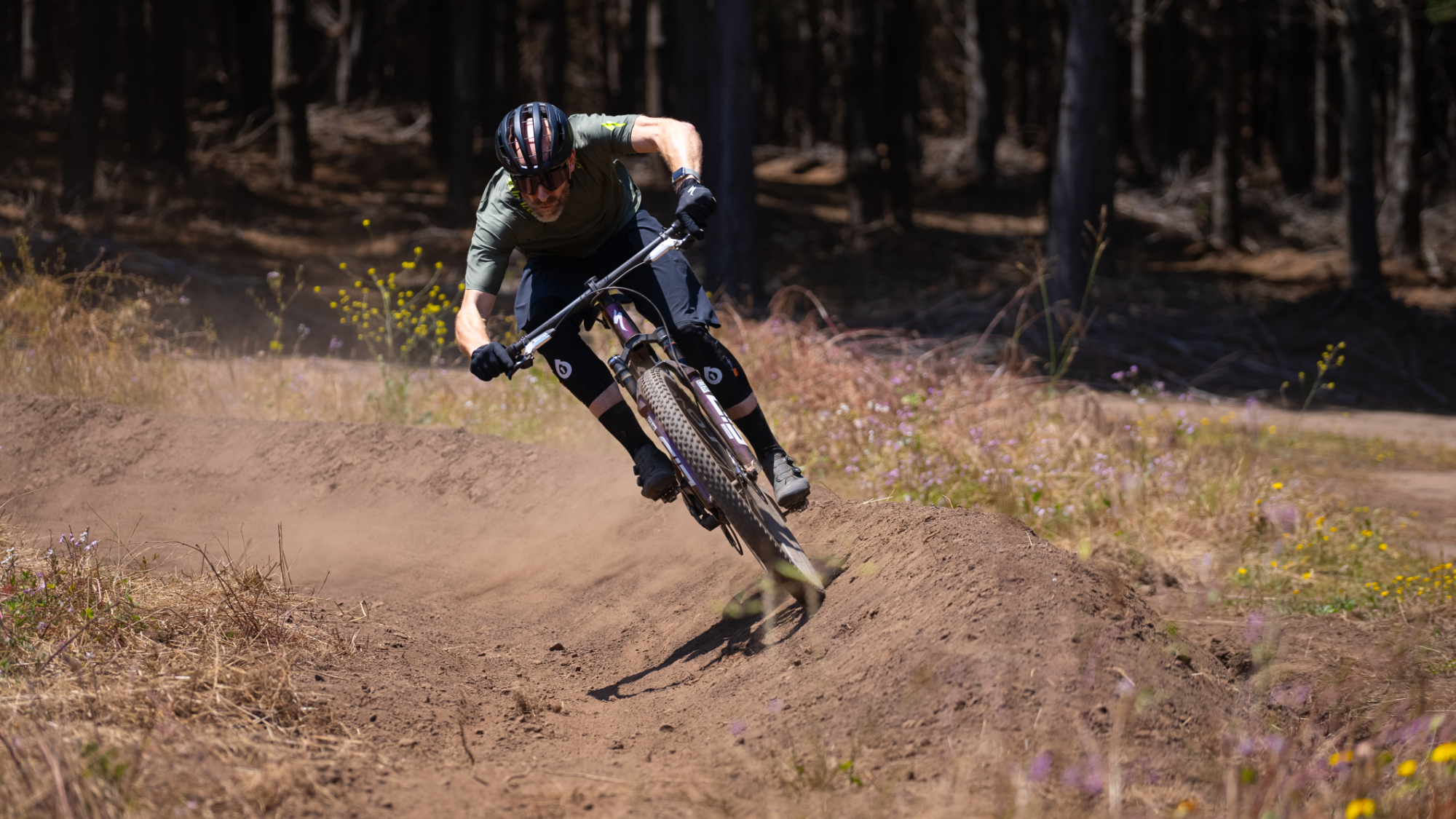
The top cross-country racers in the world used to all ride hardtails for minimum weight but tougher courses mean most of the best XC mountain bikes are now full-suspension models.
The great news is that the shift has led to some really versatile high-velocity, short-travel machines that are as happy raving on your favorite singletrack as they are ripping up a race course. But which are the winning machines and what do you need to know before you buy? Here's everything you need to know to find the best XC MTB for you.
We've divided this guide into XC race bikes, downcountry bikes, and fast trail bike options – these three categories span speed-orientated bikes. At the end of the article, you'll also find advice on how to choose the best XC mountain bike.
If after reading this, you fancy looking at some more cross-country kit, then check out our guides to the best clipless MTB pedals, best MTB shoes and best XC tires.
Best XC race bikes
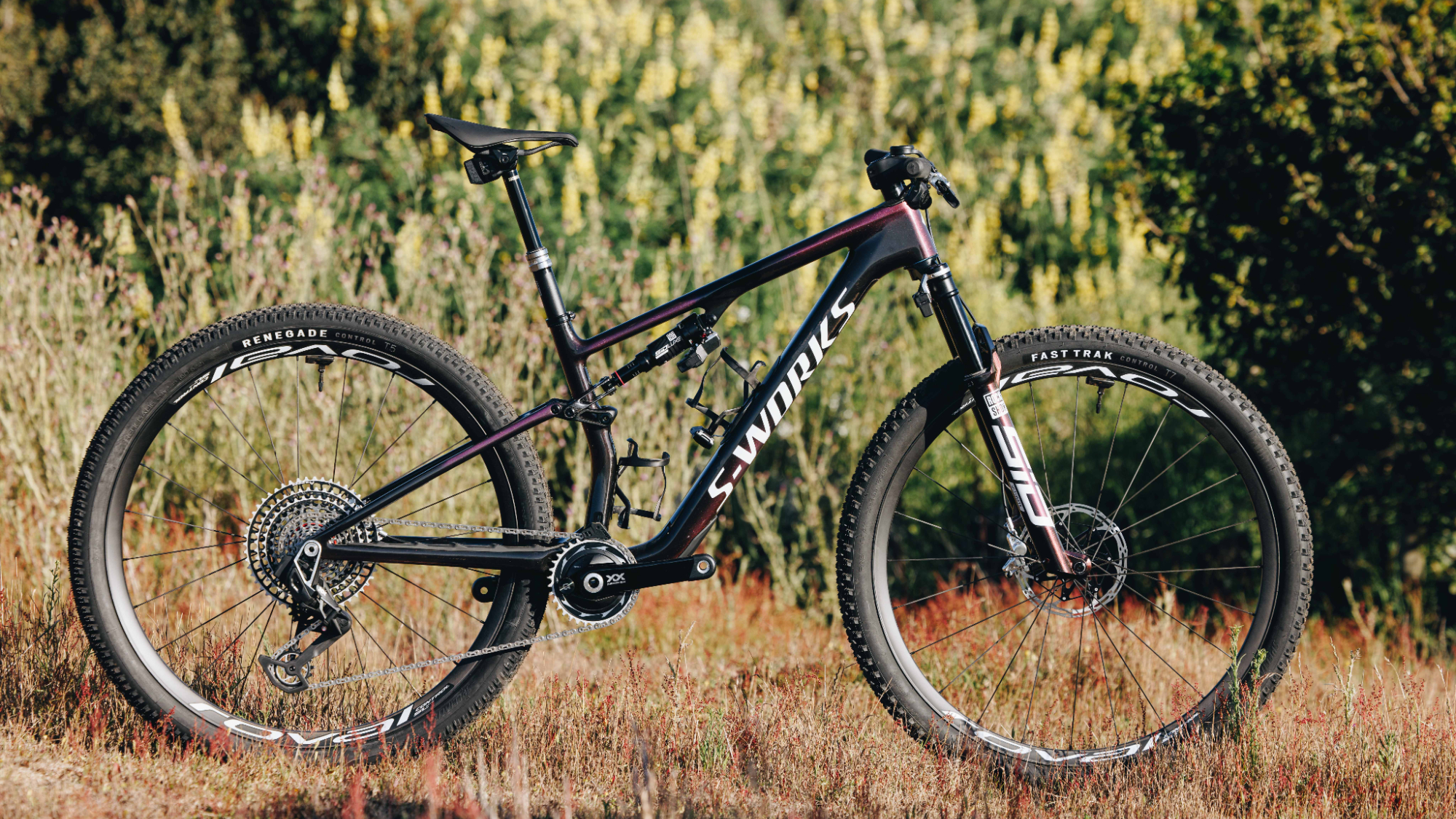
Specifications
Reasons to buy
Reasons to avoid
The new Specialized S-Works Epic 8 is the first bike to feature SRAM's XC orientated Flight Attendant AI-controlled suspension system. While the trail version has been around for a while now, the new XC system controls the operation of RockShox SID fork and SIDLuxe shock aided by inputs from the trail and a Quarq XX SL power meter. In our testing, the system works superbly and gives you the optimum level of suspension support for whatever the trail throws your way.
While this tech is very impressive, the real star of the show is the new Epic 8 frame (also used by the Epic 8 Evo). The progressive and totally sorted geometry allows for all sorts of rowdy riding, but it's light (claimed 1,795g with the shock and frame hardware), taught, super tough and ready to win races.
Unsurprisingly for a top spec race steed, the kit list leaves no box unticked. The bike runs on sub 1,300g Roval Control Wheels, while a Roval SL one-piece carbon cockpit and carbon rails on the Body Geometry S-Works Power saddle help keep the grams to a minimum. The drivetrain is SRAM's race-spec Eagle AXS XX SL T-Type Transmission and you get a 150mm drop RockShox Reverb AXS seatpost which the SRAM AXS shifter Pods also operate.
Tester, Guy Kesteven summed up the S-Works Epic 8. "If you can afford the S-Works Epic 8, it really is a next level technology and velocity benchmark that makes maximum speed easier than ever. Whichever spec of Epic 8 you get, the frame, geometry and suspension will make it an exceptional XC race/superfast trail bike though."
For more, see his full Specialized S-Works Epic 8 review.

Specifications
Reasons to buy
Reasons to avoid
Santa Cruz haven’t had a proper podium-focussed full-suspension XC race bike in their line up for years but the fourth-generation Santa Cruz Blur impressed us so much that we awarded it five stars in our full review.
While Santa Cruz's trail bikes from Tallboy to Megatower all look the same and share the same suspension system, the Blur is totally different. The 'Superlight' suspension system uses flex in the seat stay and a top tube mounted shock to give 100mm of travel. That’s matched by the ultralight RockShox SID SL fork up front but there’s also a 120mm TR version of the bike available.
SRAM’s X01 Eagle AXS wireless drivetrain along with SRAM Level RSC brakes delivers top spec stop and go. Lightweight Reserve carbon rims are responsive yet controlled while the 100mm Fox Transfer SL dropper post is just enough for jiving on tech trails. Despite being seriously light you still get a full lifetime warranty on frame, rims, bearings and handlebars, and no weight restriction either.
It's the effortless acceleration and effervescent flow and fun of the Blur that really made it a favourite of our testers, though, both on the race track and off.
Check out our in-depth five-star review of the Santa Cruz Blur.

Specifications
Reasons to buy
Reasons to avoid
The Scott Spark is by far the most successful cross-country race bike of the last decade, and the current model is faster and more controlled, as well as looking uniquely sleek.
The most obvious change is that Scott has hidden the rear shock inside the frame so it’s not exposed to the elements. The brand has also bumped up the rear suspension travel to 120mm on all Spark models, not just the downcountry/trail ones. The already progressive, control-boosting geometry can also be made a degree slacker in just a couple of minutes on the trailside.
The Team Issue AXS is a real sweet spot in terms of value for racers too. The excellent RockShox SID fork and Deluxe rear shock suspension feature bar lever controlled open, traction and lock settings for maximum efficiency. The SRAM GX Eagle AXS electronic drivetrain is flawlessly fast and you get the superlight Syncros Hixon all in one carbon cockpit. The Syncros Silverton wheels are light too and Maxxis Rekon 2.4in tires roll super fast while staying rocky section safe.
All it's really lacking is a dropper post, although some racers still don't use them so the omission is forgivable. Also, if you’ve got the cash for an ultimate race bike, even lighter HMX and HMX SL versions of the frame with carbon Syncros wheel options are available.
Read more about the bike in our full Scott Spark Team Issue AXS review.
Best downcountry bikes
With trail bikes getting heavier and travel getting longer all the time, a new breed of agile, responsive but still impressively controlled and fun-to-rally 'downcountry' bikes have appeared. A lot of the models that claim to be in this category are too heavy or slow, however, so we've picked our favorites carefully.
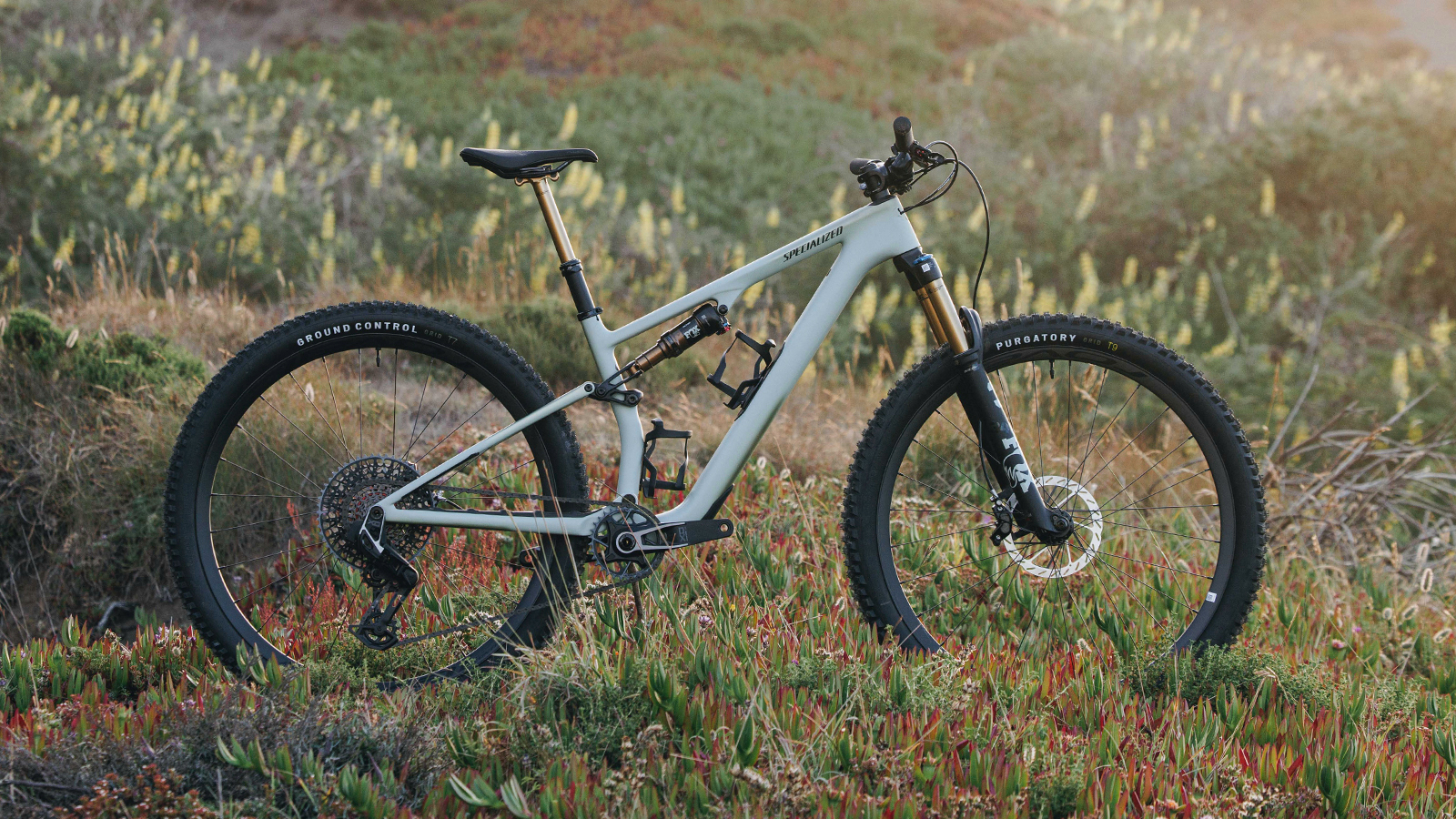
Specifications
Reasons to buy
Reasons to avoid
The Epic 8 Evo runs the same frame as the flagship S-Works Epic 8 XC bike (see above), but is designed for those who want a bit more travel and handling prowess.
The suspension is bumped up to 130mm front and 120mm rear with a Fox 34 Factory Grip2 fork and a Float Factory EVOL shock. Wheels come in the form of Roval Control rims on Industry Nine 1/1 hubs and are shod with Specialized Purgatory Grid T9/T7 tires. Gears and drivetrain are SRAM's Eagle XO AXS, T-Type Transmission, complemented with 4-pot SRAM Code Stealth Silver with 200mm and 180mm rotors for plenty of stopping power.
In our testing, the latest Epic Evo has proved itself to be more capable than ever. The tech-taming longer, lower frame geometry can seriously challenge all-out trail/enduro bikes on tougher trails despite relatively its short travel. It's about a kilo lighter than those bikes too, so feels far spritelier and leaves them dead in sprint or climb situations. The extra capability means it's also about a kilo heavier than the previous version, but if you want a lighter bike, the regular Epic 8 is the one for you.
Our tester, Guy Kesteven, said the Epic 8 Evo Pro "has muscled up a weight category, but punchy pedaling, welterweight agility and trail brawler spec make it a downcountry champ."
For more, see his full Specialized Epic 8 Evo Pro review.
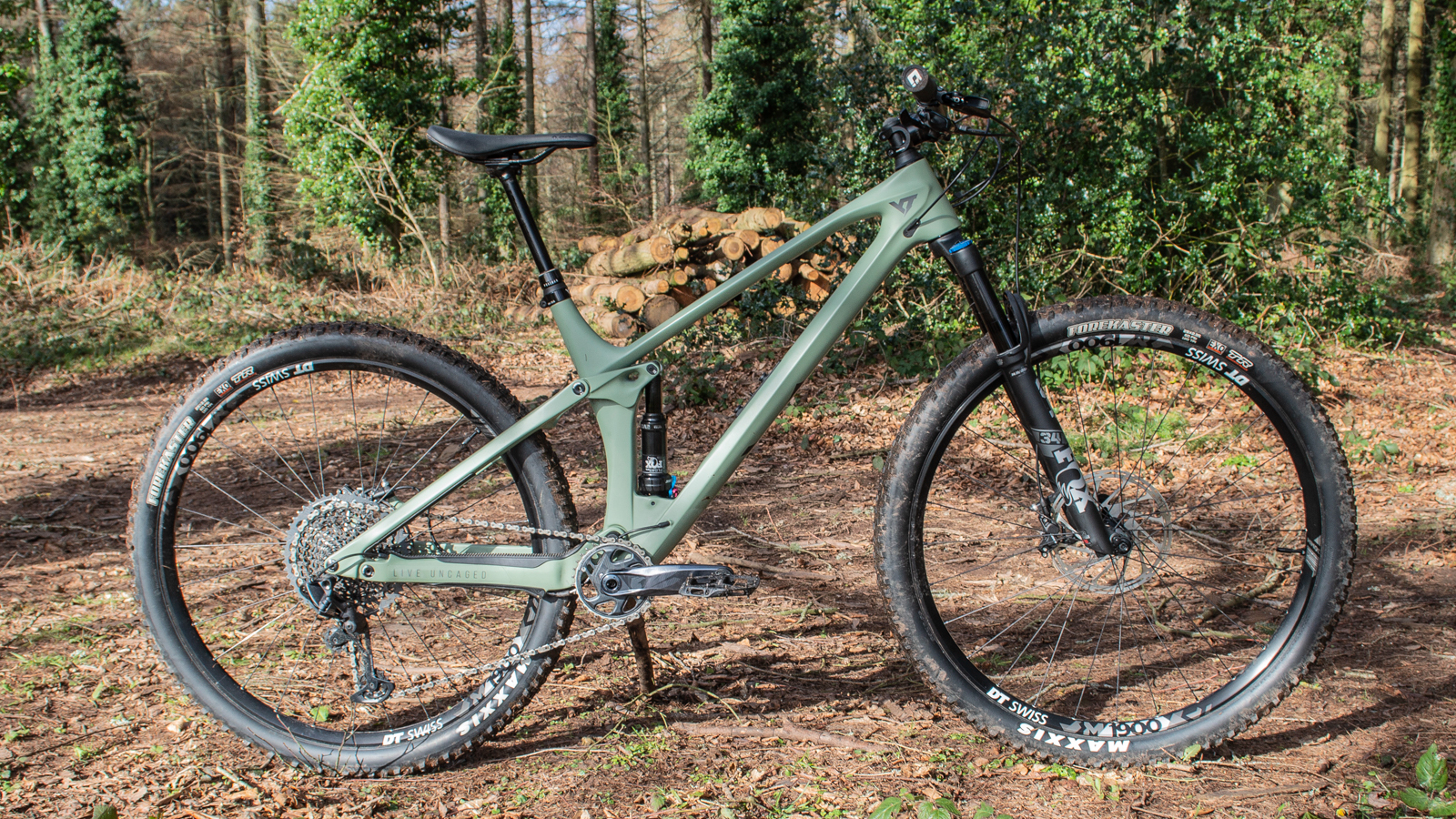
Specifications
Reasons to buy
Reasons to avoid
The Izzo is YT's foray into the lightweight full-suspension bike category is more downcountry than cross-country with 130mm of travel front and rear. However, with trail capabilities too, this definitely isn't a race bike, but it can keep up with the pack on climbs and then shred them on the descents.
The suspension is 130mm front and rear with a Fox 34 Float Performance Elite fork up front and Float shock at the rear. The bike is outfitted with a SRAM GX Eagle 12-speed drivetrain and SRAM G2 R brakes. The DT Swiss M 1900 Spline wheels are wrapped in Maxxis Forecaster tires.
While Rich Owen tested the Core 3 model, the more expensive Core 4 model is slightly lighter with a (claimed) weight of 12.6kg / 28.21lb. In his Izzo review, Rich summed up the bike: "The YT Izzo is a serious blast to ride. A short-travel bike that gives a superbly planted feel and hungers for out of the saddle sprints and pumps over flowing, undulating trails. YT's totally sorted geometry means it's more capable than 130mm travel might suggest and the Izzo can take tough trails in its stride."
Check out the full review of the YT Izzo Core 3.
Best XC bikes for rapid trail riding

Specifications
Reasons to buy
Reasons to avoid
Specialized's Chisel hardtail is an aluminum XC bike that costs half the price of some of the carbon-framed bikes in this article and still performs brilliantly. The recently launched FS (full-suspension) version also punches well above its price point and our tester, Guy Kesteven, rated the Chisel FS as 4.5 out of 5 in his review.
So why is it such a great bike for the price? Well, the FS frame is made using Specialized’s unique, in-house ‘SmartWeld’ alloy. The ends of the frame tubes are semi-closed like a drinks can. This increases their strength and gives a bigger weld area so thinner wall thicknesses can be used across the length of each tube. The resulting Chisel FS frame weighs 2,720g (size medium, inc. shock and fixtures) which is seriously impressive at this price, and the overall weight for our size large test bike was 14.47kg / 31.9lb.
As for the Chisel FS' geometry, that's taken from Specialized's top-of-the-line Epic 8 and Epic Evo 8 frames (both bikes are featured here), so is totally on the money for modern confident and capable XC performance.
Guy summed the Chisel FS. "Super-fast, impressively light, full-suspension bike for the cash, with excellent pedal / plush suspension balance, sorted geometry, great contact points and proper all-weather race tires."
For more detail, see our full Specialized Chisel FS review.

Specifications
Reasons to buy
Reasons to avoid
The RC 9000 version of Merida's XC race bike lineup features sorted suspension, a stiff frame and improved handling. The presence of Kashima-coated Fox Factory suspension front and back, and a full Shimano XTR groupset also helps make it a proper flagship machine. Like most Merida bikes it offers great value for money compared to top XC bikes from other brands.
Even though this bike is a bit heavier than its competitors, it's still effortlessly efficient with a blisteringly quick baseline. Slacker and longer geometry than previously hysterical Merida race bikes means acceptable stability for attacking fast technical XC circuits. It's also less stressful for extended distance rides or marathon events. There's a longer fork version if you want to gain rally capability at the expense of race weight, though if you get this flagship version, watch out for the awkward remote lock-out and bleed-needy brakes.
If you want more detail check out our full review in which we went epic in full winter conditions to test the Merida Ninety-six RC 9000.
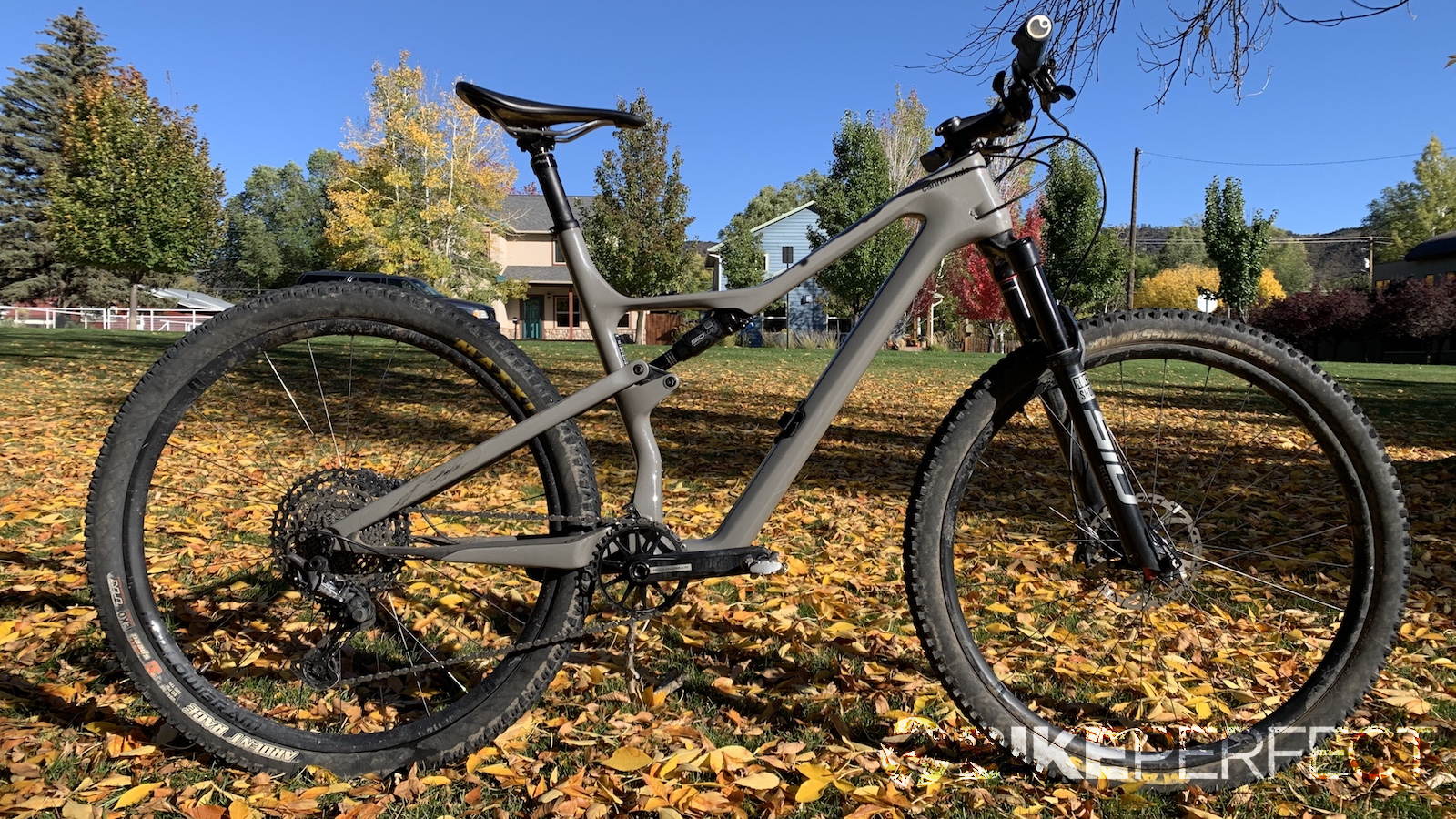
Specifications
Reasons to buy
Reasons to avoid
Cannondale's Scalpel full-suspension mountain bike can slice and dice with the best XCO bikes out there. The SE model range keeps the speed but relaxes the bike's geometry to move it more towards the downcountry space.
A 120mm suspension platform is filled out by a RockShox fork and rear shock that lead to efficient pedaling and excellent sensitivity on technical trails. The build kit is provided by Shimano with an XT drivetrain which will be a welcome sight for old school riders who prize reliability. The XT brakes need careful bleeding to meet similar expectations but they're great when they do work.
The Scalpel SE's geometry isn't the most extreme that we've ridden but will still make you want to ride both flowy and technical trails all day. A dropper post specced as standard helps when things get really hectic but don't believe the 'trail bike' hype as any Scalpel will always be first and foremost about speed.
Read more of our thoughts in our full Cannondale Scalpel SE 1 review.
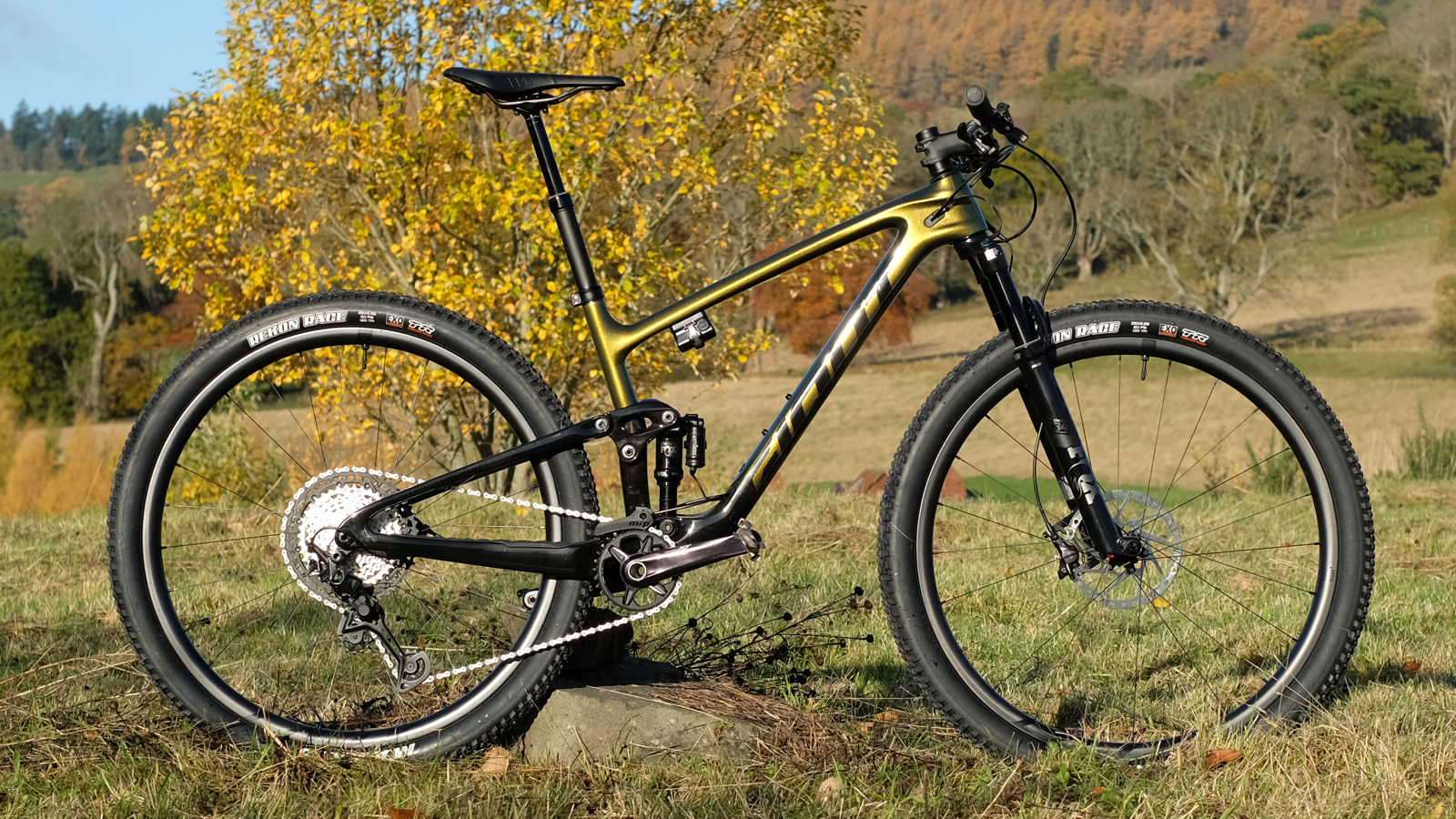
Specifications
Reasons to buy
Reasons to avoid
Giant's Anthem has matured from an addictively feisty privateer racer into a more measured and controlled all-rounder. We tested it with the latest Fox Live Valve automatic suspension, although there are more affordable analog models now too.
While the Fox batteries and control boxes mean a middling 11.45kg mass, the actual Anthem frame is 250g lighter than before. Like the Santa Cruz Blur that's partly thanks to Giant swapping from a twin link (Maestro) design to a simpler flex stay set-up. We did find it collected some of that weight back in terms of mud collecting near the BB, but Giant says the shaping gives them 20% more pedaling stiffness.
While the Live Valve didn't always play ball, the basic bike is clearly well balanced and confident thanks to a 67.5-degree head angle and 450mm reach on the medium model. It's also naturally fast whether or not the 'sentient' suspension decides to open the shock and fork. Although the bike launched with Live Valve only, there's a manual remote shock version available now as well. Check you're getting the latest version, however, as the steeper angle Maestro suspension version is also available on the Giant website.
If this has got you tempted, check out Graham's full review of the Giant Anthem here
The best XC mountain bikes: everything you need to know
What are the benefits of a full-suspension mountain bike?
On a smooth surface such as a fire-road climb or flat-out sprint down the start/finish straight, nothing is faster than a super-light hardtail like the ones in our best lightweight mountain bikes under 10kg guide. If you’ve got the skills you can skip and skim them through some pretty technical terrain, too.
When the surface gets relentlessly rough or there are big drops and rocks involved, however, full-suspension sucks up bike-stopping impacts to help you sustain speed. It also keeps the rear wheel more consistently connected for better technical climbing traction and cornering speed. In most cases, full-suspension mountain bikes for racing will have a remote lockout so you can turn them into hard sprinting pseudo-hardtails at the flick of a switch.
That’s why you’ll rarely see any of the fastest male racers on anything but full suspension bikes. That said, more of the top female riders still pick a hardtail – particularly on less technical courses with a lot of climbing – because they're generally lighter.
How much mountain bike suspension travel is best?
100mm is still the most common amount of wheel movement (travel) for race bikes. It’s enough to make a noticeable difference in control off drops and through rock gardens, but you still get to use the lightest possible front forks.
That said, there are an increasing number of race bikes – such as Scott's Spark and Specialized's Epic Evo – using 120mm of travel . If it's done right that extra 20mm really makes a difference on rough, technical sections. It rarely adds any weight to the frame of the bike either. And while 120mm forks are always a few hundred grams heavier, if the overall lap times are lower those extra grams are worth it.
Not all race bikes are adding suspension, however. Bikes like BMC’s TeamElite softail and Trek’s 60mm travel Supercaliber (with its ‘pump-action-shotgun-style' shock arrangement) have both won World Cup races this season.
What's the best XC mountain bike frame geometry?
The latest full-suspension race bikes tend to have slightly more ‘trail-style’ geometry such as 66 to 68 degree head angles for more stable steering. Top tube reach figures are growing slightly on some bikes to compensate for shorter stems, and increase confidence on more challenging courses.
But we’re still talking about race-focussed bikes built for close-combat responsiveness, rather than short-travel trail bikes for flat-out mountain descents. So while there are some 120mm travel bikes with identical geometry to 150mm travel enduro bikes, they’re not targeting the same sort of riding.
What are the best mountain XC bike components?
The more progressive riders on the circuit are also fitting trail-style components to their race bikes and we’re seeing that reflected in some off-the-shelf bikes, too. In terms of specifics, that can be as simple as wider handlebars (that you can trim down to taste) or enough space in the frame to run wider tires. Trek is the only brand brave enough to fit 2.4in rubber as standard on its new Top Fuel, though. Most of the latest short-travel suspension frames can also take an internally routed dropper seatpost, and it's becoming more common on XC bikes.
How much should the best XC mountain bikes weigh?
A sub 10kg (22lb) overall weight is the goal of most flagship XC full suspension bikes, but you need to throw a lot of carbon and money at most frames to get there. 'Downcountry' isn't helping either as some brands – including Trek and their Top Fuel – include short-travel trail bikes (weighing up to 15kg) in the XC category on their website.
That’s why it’s normally a good idea to look at frame weights to give you an idea of the potential outcome of any upgrade journey – or it would be a good idea if a large proportion of manufacturers didn’t massage their mass figures by not including shocks, axles, seat clamps, linkages etc.
That makes getting actual weights for bikes – take a scale to the shop if you have to – worthwhile when shopping. 11-12kg bikes are reasonably easy to find without completely emptying your race entry fund.
And if you do start upgrading to save weight, make sure you actually weigh the stuff you're swapping rather than assuming it's worth doing. Things like cassettes, or cheap carbon bars and seatposts can be massively heavy. in contrast some alloy kit we've weighed has been surprisingly light, so always do a full bike 'cost per gram saved' audit before starting to replace parts.
How we test XC bikes
Our testing procedure for cross-country bikes is as rigorous as it gets. We subject them to testing in all weathers, all trail conditions and take the bikes outside their comfort zone to see how they perform on tougher runs. Whenever possible, we test the bikes in race conditions too. We also compare them to rival bikes in the same category, often doing back-to-back testing, to see how they measure up to the competition and of course, we'll always let you know of our findings.
Meet the tester
Why trust BikePerfect

Guy Kesteven is Bike Perfect’s contributing tech editor. He's been riding XC bikes since cross-country first became a thing and has tested hundreds of XC bikes in that time.
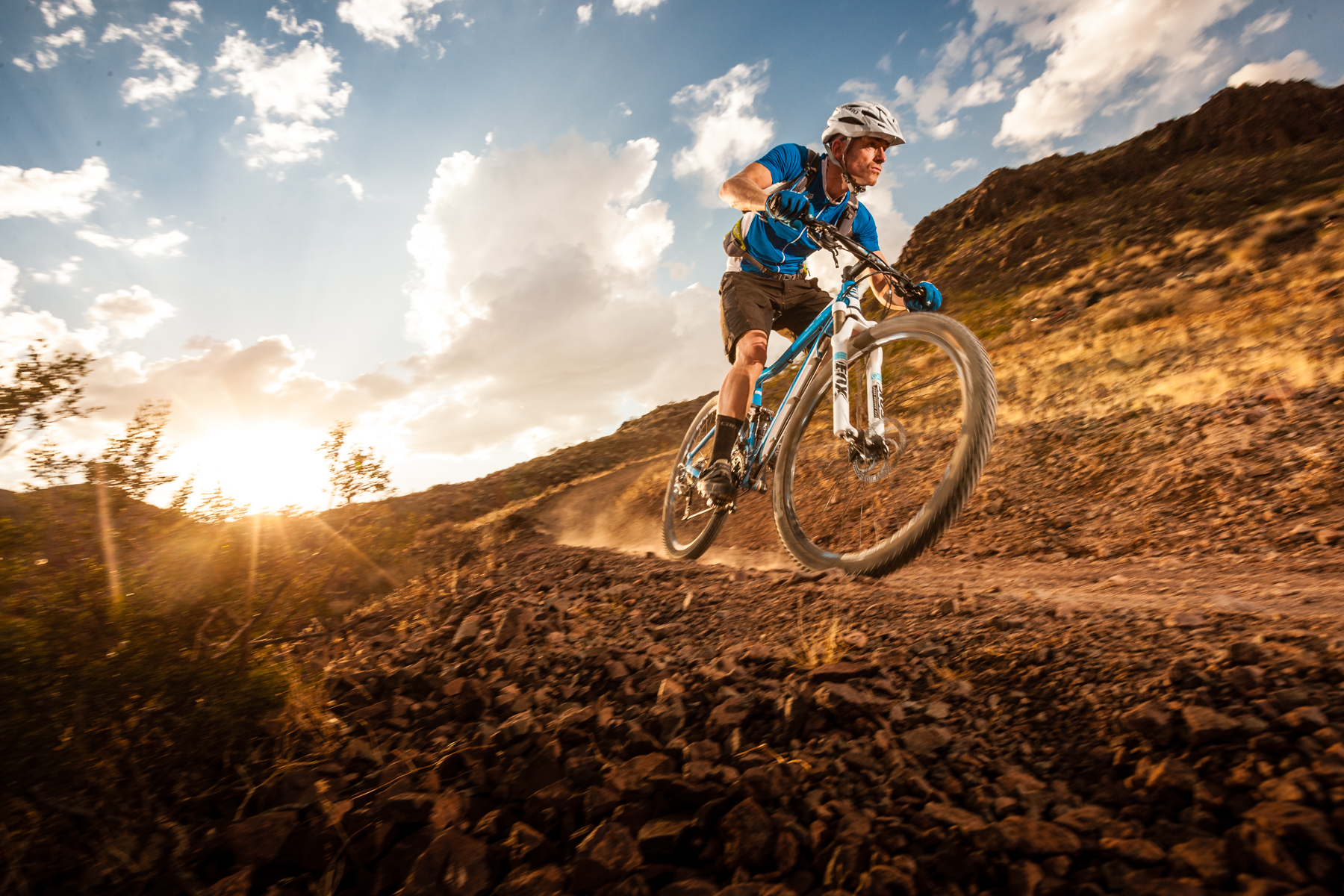
Guy Kesteven has been working on Bike Perfect since its launch in 2019. He started writing and testing for bike mags in 1996. Since then he’s written several million words about several thousand test bikes and a ridiculous amount of riding gear. He’s also penned a handful of bike-related books and he reviews MTBs over on YouTube.
Current rides: Cervelo ZFS-5, Specialized Chisel, custom Nicolai enduro tandem, Landescape/Swallow custom gravel tandem
Height: 180cm
Weight: 69kg
- Rich OwenEditor, BikePerfect
